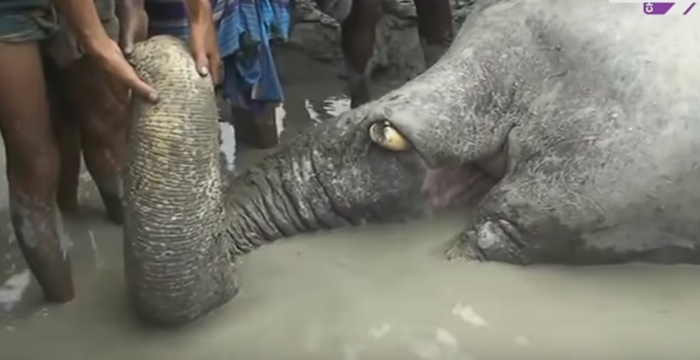
Warning: This is not for the faint of heart. It is a tragic story of an elephant named Bangabahadur.
Monsoon season in India is not as romantic as it may sound, especially If you have only heard of it through the film, Monsoon Wedding.
It is the rainy season in India that can cause real destruction. Even the villages around where I live in Dharamsala are on red alert. People have been warned that their homes will be washed away if there is one more landslide. Some families have lost their homes already and are living in schoolhouses.
In Assam, a northern state of India, the monsoons are particularly destructive. This year alone, in Assam, “80,000 people and 4,000 hectares of crop land have been affected by recent flooding, according to Assam State Disaster Management Agency (ASDMA).”
Thirty-one people have died from landslides. Rivers are overflowing. In the U.S., this would be a state of emergency, a national problem. In India, this is just an annual occurrence.
It is not any easier for the animals. Just this month, 13 rhinos died of drowning in a national park in Assam.
This year’s monsoon has also cost one elephant his life. This elephant was swept into the Brahmaputra River for 900 miles, until finally being dumped in Bangladesh. At different points along the way, he tried to get to shore, but was beaten back into the water by villagers who were afraid the he would trample their homes and crops.
Finally, he reached a swampy shore in Bangladesh, where he tried to find food and shelter. The locals named him Bangabahadur, which means, “hero of Bengal.”
Veterinarians tried to help him but they could not contain him. They used dart guns to tranquilize him and then villagers tried to get him up on dry land. Crowds gathered to watch this beautiful creature, however he was kept in shackles so that he could not trample their homes and crops. This went on for 45 days, before he died of a heart attack on August 16th. My heart broke watching this video.
It is so hard for us Westerners to understand this seemingly cruel behavior towards such a beautiful creature. However, gaining perspective may help.
Assam is one of the poorest states in India. The number of people below the poverty line is almost 40 percent. The poverty line in India is when someone falls below making two dollars per day! The estimated population of Assam is almost five million. If you do the math, that means two million people make under $2 per day. Assam also falls on the low end of the scale for literacy rates when comparing states.
Bangladesh as a whole:
“Bangladesh is one of the world’s most densely populated countries with 150 million people, 26% of whom live below the national poverty line of US $2 per day. In addition, child malnutrition rates are currently at 48%, in condition that is tied to the low social status of women in Bangladeshi society.”
So, let’s imagine we are poor, illiterate, already stressed because floods and landslides are ruining our homes and crops, and killing our family members and friends. There is nothing to eat, the water is contaminated, and then a huge animal shows up who looks pretty scary. A reality so real that no one on “Survivor” or the “Amazing Race” could get through it. This is a Hollywood movie that would have us sitting on the edge of our seats, but in Hollywood, the hero would survive.
Bangabahadur did not survive, but neither did 31 people, 13 rhinos, and more than that in homes and crops—and counting.
I would hope if I saw any creature trying to do what it needed to do to live, I would try to help. I would hope that I would be the one to get a crew together to get an elephant out of a river and to safety. I would hope that I would be able to find a local team of vets that would come help, (even though the only vet would be miles away and may only know how to treat cows and sheep).
However, I certainly cannot say that if I was illiterate, hungry and malnourished, that I would do any of this. I may be more concerned with finding dinner for my children. I may be more concerned with building a retaining wall to prevent a landslide from destroying my home and killing my entire family. I may want to help, but I may not have the skills, the language, or the resources to do so. I may have tried to pull Bangabahadur out of the water with the rest of the villagers. But try as I might, I would probably have failed.
So yes, I will mourn Bangabahadur. He was a beautiful creature that lost his life due to natural disaster and lack of skilled human intervention. I will also try to remember to have perspective. Lastly, I will note, that even though he did not survive, they named him. A sign of true respect and humanity, so for that, I will be thankful.
~
Author: Deb Jarrett
Image: Video Still
Editor: Travis May








Read 2 comments and reply